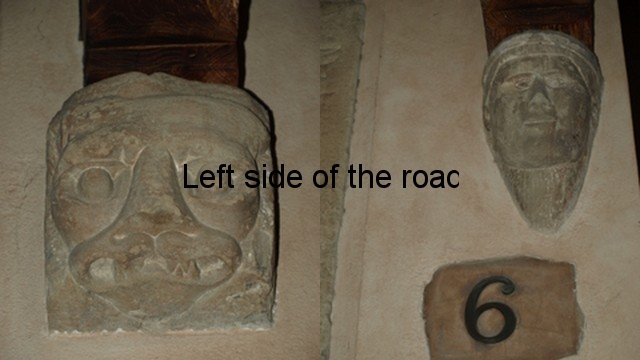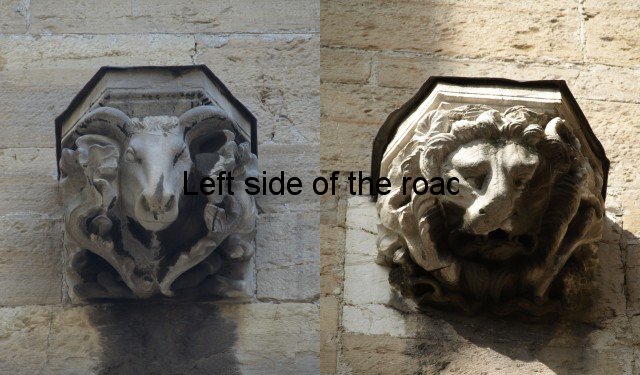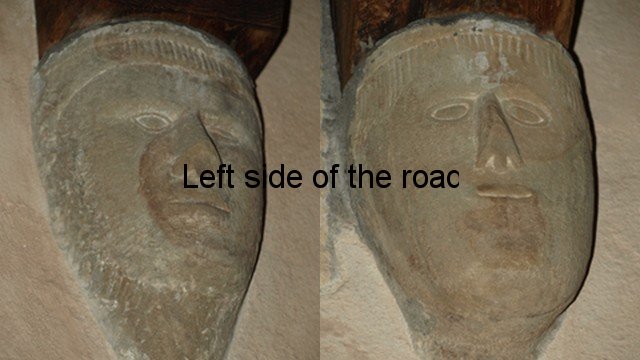Domenico Gaetano Maria Donizetti in Bergamo
Fans of opera, and especially that form known as bel canto (of which both Rossini and Bellini were also well-known exponents), will be able to follow a route following the life, literally from the cradle to the grave and a few stages in between, of Domenico Gaetano Maria Donizetti in Bergamo.
Donizetti was born in a house outside the city walls in Via Borgo Canale. To get there go through the Porta di San Alessandro, pass below the San Vigilio funicular station and the street is the third on your right – going downhill.
There’s not really a great deal from Donizetti’s time (although the house has been declared part of the National Heritage) but there is information about Donizetti’s life and the theatre in the newer part of town. However, it is an opportunity to get an idea of the type of housing of the relatively well off at the end of the 18th century.
From here head down hill to the Church of Santa Grata Inter Vites. This was where Donizetti was baptised on 3rd December 1797. The plaque is inside the small door to the left of the main double door entrance on Borgo Canale. If you can get this far don’t miss the opportunity to see the macabre paintings by Vincenzo Bonomini (who was also born in the street and baptised in the same church – but 40 years before) which are behind the main altar.
Head back into the walled city to Via Arenal – which is south-west of the principal religious and administrative buildings in the vicinity of Piazzas Vecchia and Duomo. (In fact Via Arenal and Via Borgo Canale were an extension of each other before the building of the large Seminario Vescovile.) At number 19 is the Donizetti Museum. This is a smallish museum on the first floor, up a wide staircase, and houses a number of paintings of Donizetti, examples of his manuscripts, the pianos he used, a small room with musical instruments from the period he was writing and – his death-bed. Looking at it you could imagine that Donizetti was quite happy to die in order not to have to lie on it anymore.
Continue down Via Arenal and go into the Basilica di Santa Maria Maggiore by way of the southern entrance. A few steps into the building and then to the left, against the rear wall, is Donizetti’s tomb. However, this was not the first resting place for his bones.
In 1845 he was diagnosed as suffering from cerebro-spinal syphilis which appeared to be eating away at him physically and mentally. This meant that different groups of doctors, depending upon who was paying them, came to different conclusions about what sort of treatment he should undergo and where. Having doctors fight over your fate is just about as bad as having lawyers do so and Donizetti seemed to be the only real loser.
He returned to Bergamo in October 1847 but although greeted by the city’s dignitaries and wealthy (in one of whose houses he was offered a home) he eventually died on 8th April 1848. He was originally buried in the local cemetery of Valtesse (to the north of the Città Alta) but a few years later, in 1855, he was transferred to the Basilica where a large monument awaited his remains.
This is the work of Vincenzo Vela – whose other work includes the monument to the 199 workers killed in the construction of the Gotthard Rail Tunnel between Switzerland and Italy.
This is quite a charming monument. At the top Harmony sits in mourning, a lyre in her right hand as she looks down on a picture of Donizetti – presumably she wasn’t aware of his syphilis (or does it even matter?). On the front of the plinth on which she sits there are distraught putti, the seven musical notes, breaking their lyres in their distress.
You have to head down to Città Bassa for the other two references to Donizetti. And they are both next to each other.
The Teatro Donizetti is not far away from the Porta Nova, the principal crossroads in the new part of Bergamo, along the primarily pedestrianised Via Sentierone. This provides a full programme of performances, especially between October and June. As well as a varied programme of opera there is also the Gaetano Donizetti Bergamo Music festival each year between September and December, where many of Donzetti’s works are featured as well as others from the bel canto tradition.
The theatre dates from the end of the 19th century but has undergone many changes, extensions and renovations in subsequent years without, as far as I can see, fundamentally changing the character of opera houses of the period.
Apart from buying a ticket for a performance there are no organised ways to visit the theatre just to have a look around. If you travel with a group it’s worth phoning to see if you can organise a group visit. Otherwise I suggest you just try what I did on my last visit. I went to the ticket office to ask a general question about visits to the theatre. The young woman got on the phone and said that someone would be down in a few minutes.
This was a pleasant surprise but soon realised that someone was taking their time off from their normal work to just let me into the place to have a look at the auditorium. But that was much more than I was expecting. Whilst only there for a matter of minutes and not getting a lot of information about the building it did satisfy my curiosity and I was able to get one or two pictures of the interior, without crowds of people who are the problem on performance days. Just try your luck – you’ve nothing to lose.
In the square opposite the entrance to the ticket office is the final bit of the Donizetti trail in Bergamo.
This is the Donizetti Monument in Piazza Cavour, the work of the Calabrian sculptor Francesco Jerace, erected on this spot in 1897 – at the same time as the opening of the theatre in the year of the 100th anniversary of Donizetti’s birth.
A strange story surrounds this monument. The sculptor, Jarace, had previously offered this design to the town of Catania in Sicily as a monument to their home-grown bel canto composer, Vincenzo Bellini, a more or less contemporary of Donizetti. Catania said no but Bergamo said yes (after a three-horse competition which Jarace won). This seems like a return to the days of the Roman Empire when the torso of the person remained the same but the head was different and could be removed to save on the expense of creating a completely new statue. Does that, do you think, mean that Donizetti’s head is removable?
Practical Information:
Casa Natale Donizetti (Birthplace)
Via Borgo Canale 14
Città Alta
Tel: 39 035 52 96 711 (Saturday and Sunday) 39 035 24 44 83 (Monday to Friday)
Opening Times: Saturday and Sunday, 10.00-13.00 and 15.00-18.00
Admission: Free
Church of Santa Grata Inter Vites:
Via Borgo Canale (opposite the steps of San Gottardo)
Città Alta
Opening times: Sundays from 08.30-12.00
Admission: Free
Donizetti Museum
Via Arena 19
Città Alta
Tel: 39 035 24 71 16
Opening times:
October to May
Tuesday to Friday 09.30-13.00
Saturday and Public Holidays 09.30-13.00 and 14.30-18.00
June to September
Tuesday to Sunday 09.30-13.00 and 14.30-18.00
Admission: €3 – free with the Bergamo Card
Teatro Donozetti
Piazza Cavour/Via Sentierone
Città Bassa
Tel: 39 035 41 60 614/622
Opening Times:
No set times for visits to the theatre. However, if you are in a group it might be worth phoning in advance to see what is available. There will probably be a charge.
Donizetti Tomb
Basilica di Santa Maria Maggiore
Piazza Duomo
Opening times:
November to March, weekdays 09.00-12.30 and 14.30-17.00, Sundays and public holidays 09.00-12.45 and 15.00-18.00
April to October 09.00-12.30 and 14.30-18.00
Admission: Free















